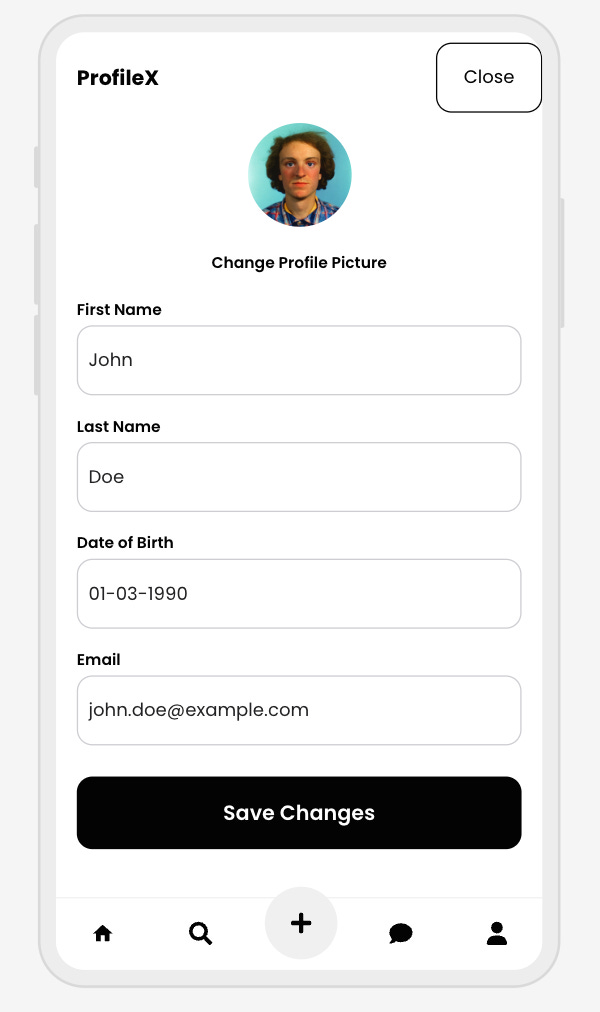Make ing apps demystified: User profile
Designing user profile screens to with techniques that skyrocket engagement
The User Profile screen is a critical component of many apps, serving as a personal space for users within the digital environment. This screen is not just a functional necessity; it's a representation of the user within the app, offering personalization and a sense of ownership. Let's explore what goes into designing an effective User Profile screen.
Understanding the Importance of a User Profile Screen
The User Profile screen is often the hub for personalization in an app. It allows users to manage their personal information, preferences, and settings.
This screen is where users can feel a sense of identity and control over their app experience. In social media apps, for instance, it's also a space for self-expression and connection with others.
Key Elements of a User Profile Screen
Personal Information Display: This includes the user's name, profile photo, and other personal details. This information must be displayed in a clear, concise manner, making it easy for users to view and edit their details
.
Customization Options: Allowing users to customize their profile, such as changing their profile picture or cover photo, adds a level of personalization and engagement.
Privacy Settings: Providing easy access to privacy settings from the profile screen is crucial. Users should be able to control who sees their information and manage their privacy preferences conveniently.
User Activity Overview: For many apps, including a summary of the user’s activity (such as recent posts, transactions, or interactions) can enhance the functionality of the profile screen.
Navigation to Other App Features: The profile screen can also serve as a navigation hub, linking to other sections of the app like settings, support, or user-specific features.
Design Considerations for an Enhanced User Experience
Clarity and Accessibility: The layout should be clear and easy to navigate, with important information and settings easily accessible. Ensuring the design is accessible to all users, including those with disabilities, is also vital.
Visual Appeal: A visually appealing profile screen that aligns with the app’s overall design aesthetic can enhance the user experience. This includes thoughtful use of colors, fonts, and imagery.
Responsive and Adaptive Design: The profile screen should look and function well across different devices and screen sizes, ensuring a consistent experience.
User-Centered Design: Design decisions should be driven by user needs and preferences. This can involve user testing and feedback to refine the profile screen.
Load Time and Performance: Optimizing the profile screen for quick load times and smooth performance is critical, as users expect immediate access to their personal information.
Security and Privacy: Since the profile screen often contains sensitive personal information, ensuring data security and privacy is paramount.
Real-World Examples of Effective User Profile Screens
Facebook: Facebook's profile screen is a comprehensive digital representation of a user. It includes a cover photo, profile picture, personal information, timeline of posts, photos, friends list, and more. The layout allows users to quickly access different aspects of their personal and social data, reflecting the platform's focus on community and sharing.
Twitter: Twitter's profile screen is streamlined and content-focused. It features a user's profile picture and banner image, followed by their tweet feed. The design emphasizes a user's tweets, retweets, media, and likes, making it easy for others to engage with their content.
Airbnb: Airbnb's profile screen focuses on trust and credibility, essential for a community-based marketplace. It displays user reviews, verifications, and a bio. For hosts, it also shows their listings. This design approach helps build confidence among users in the platform's community.
Uber: In Uber's app, the profile screen is functional and straightforward. It includes the user's name, profile picture, and essential information like trip history and payment methods. The design is clean and minimalistic, focusing on the user's journey with the app.
Spotify: Spotify's profile screen is personalized and interactive. It displays the user's playlists, recently played artists, and public music preferences. The design is visually appealing, with a focus on album artwork and a seamless integration of the user's musical taste.
LinkedIn: LinkedIn's profile screen is like an interactive digital resume. It includes a profile photo, background image, professional summary, experience, education, skills, endorsements, and recommendations. The layout is professional and detailed, emphasizing career and networking.
Instagram: Instagram's profile screen is visually led, with a focus on the user's posted photos and videos. It features a grid layout of posts, along with the user's profile picture and a brief bio at the top. The design is clean and image-focused, reflecting the app's emphasis on visual content.
Strava: Strava, a fitness app, features a profile screen that highlights the user's athletic activities. It includes recent workouts, achievements, and personal records. The design is dynamic and motivational, showcasing the user's fitness journey and accomplishments.

Let’s think through from a designer's perspective
When a UX/UI designer approaches the task of organizing a User Profile screen, their thought process and methodology encompass a blend of user-centric design principles, aesthetic sensibility, and practical functionality.
Understanding the User
User Research: First and foremost, a UX/UI designer seeks to understand the user. Who are the users of this app? What are their needs, behaviors, and preferences?
Empathy: Developing empathy with the user is crucial. The designer puts themselves in the user's shoes to understand what they would seek in a profile section.
Keep reading with a 7-day free trial
Subscribe to The Bootstrapped Founder to keep reading this post and get 7 days of free access to the full post archives.





